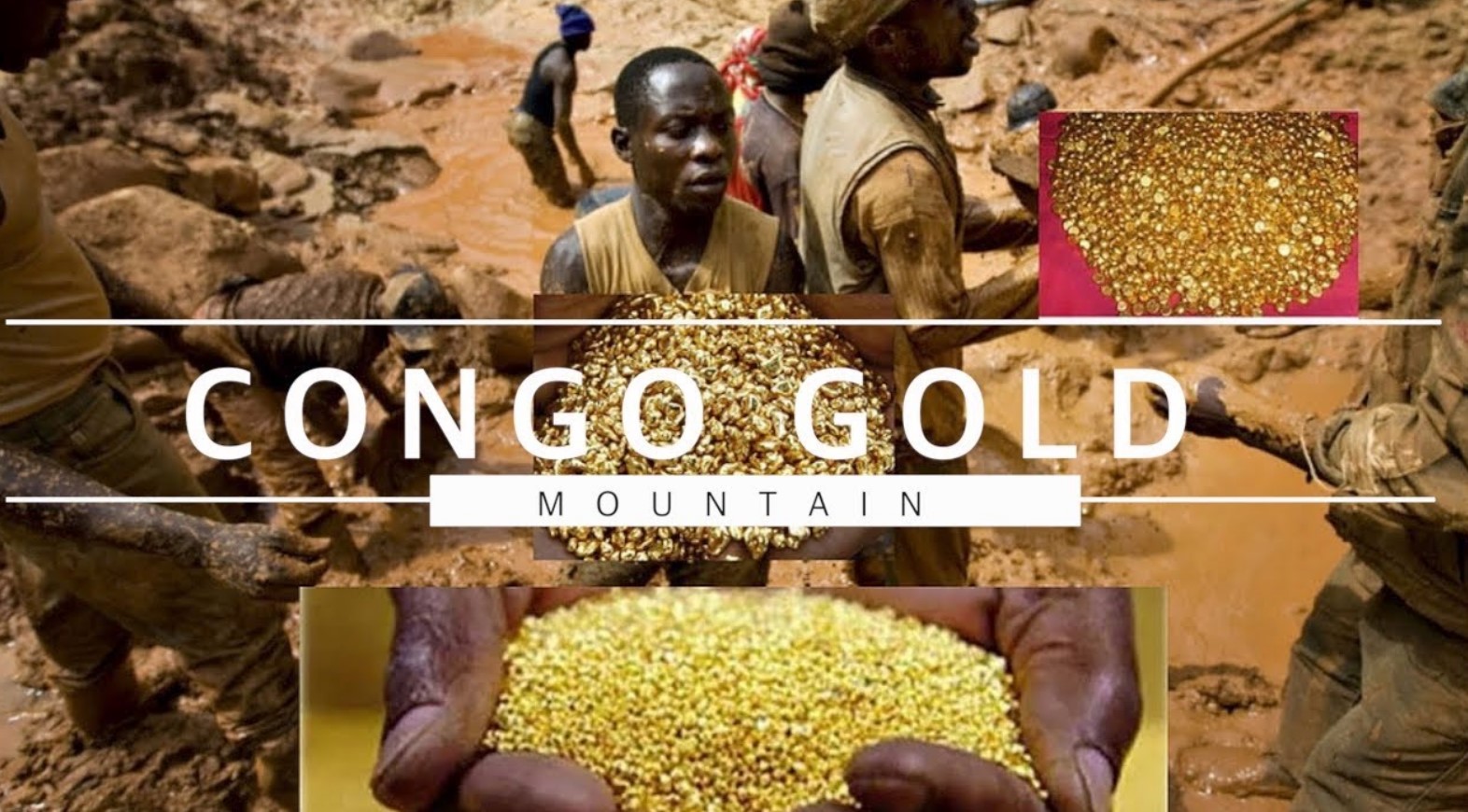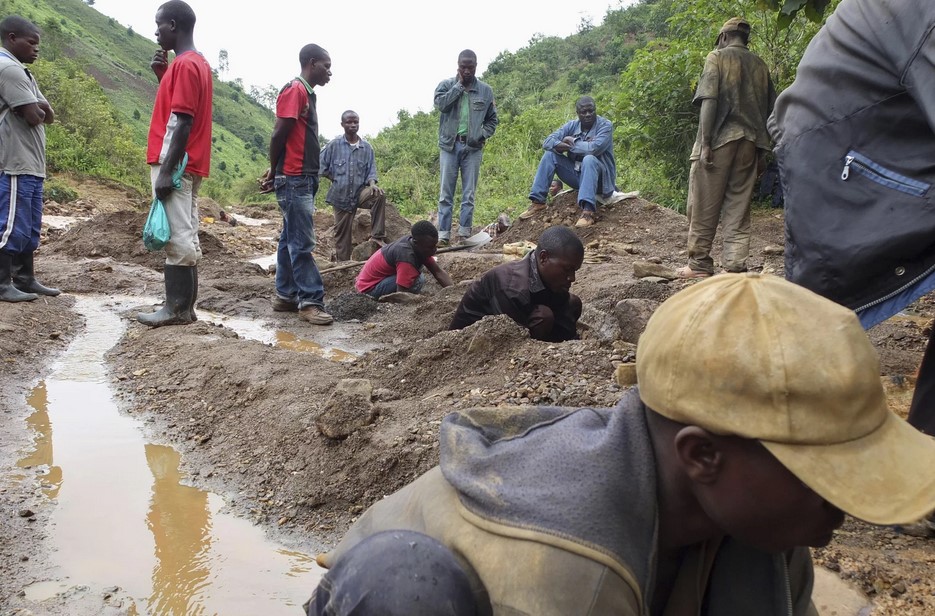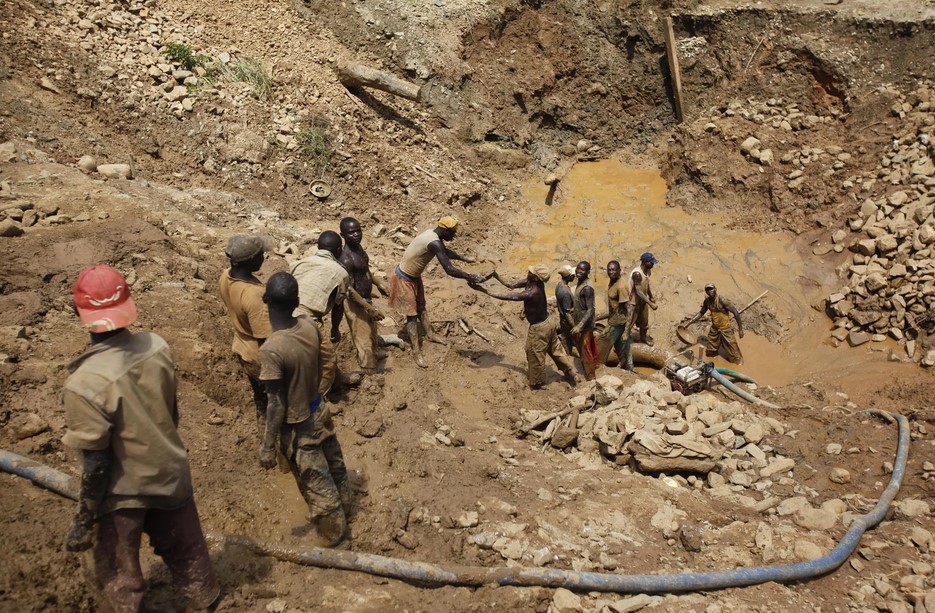 By Neenah Payne
By Neenah Payne
King Leopold II’s Genocide Of The Belgian Congo explains that King Leopold II of Belgium’s policies from 1897 – 1908 killed 10-15 million people in the Congo. Leopold had vast amounts of rubber extracted for bicycle and car tires and electric wires.
Human, Environmental and Wildlife Costs of Cell Phones, PCs, Laptops, DVD Players shows that The Democratic Republic Congo (DRC) is rich in rubber, ivory, cobalt, copper, niobium, coltan, petroleum, industrial and gem diamonds, gold, silver, zinc, manganese, tin, uranium, coal, hydropower, and timber. The Congo is the richest country on Earth in terms of natural resources. If Eisenhower, the UN, and Belgium had not killed Prime Minister Patrice Lumumba, the Congo might now be one of the richest world’s countries! Malcolm X called Lumumba “the greatest man to ever walk the African continent”.
Now, the Congo is being exploited for coltan which is refined into tantalum powder to make heat-resistant capacitors for cell phones, laptops, PCs, DVD players, and other high-end electronics. With global technological innovation on the rise, the demand for coltan continues to surge, creating the incentive for miners and traders to step up their efforts to extract it under very arduous conditions. The people of the Congo have benefited very little from these extraordinary resources which are enriching and empowering the world.
In the spring of 2021 villagers in the Congo discovered a mountain which has 60-90% gold soil! That led to a gold rush much like the California Gold Rush in 1848-1852, the Black Hills Gold Rush in 1874, and the Klondike Gold Rush in 1896 in the US.
Congo Gold Mountain Discovered In 2021
A Mountain of Gold has been discovered in Congo, Africa! EL DORADO! The soil is 90% Gold!
VILLAGERS IN CONGO DISCOVERS A MOUNTAIN FULL OF GOLD! (video)
How Scarce Is Gold Really?
The Congolese Mountain of Gold: Surprise Discovery in Africa Shows Metal’s Scarcity Is Hard to Prove
“A myriad of gold bugs like to compliment the yellow precious metal for its ostensible scarcity, as estimates say only 2,500 to 3,000 tons of new gold is produced annually. While new gold discoveries have seemingly slowed, investigative studies also show that in some areas, gold is being smuggled into the economy by the ton, and often never accounted for as far as per annum issuance estimates. Recently, reports show a whole mountain of gold was discovered in the Congo, as the Democratic Republic of the Congo is well known for being a region that sees tons of smuggled gold filtered into the global financial system unreported.
Surprise Gold Deposits Continue to Crack the Precious Metal’s Scarcity Proposition
It has always been said that the precious metal gold (Au) is scarce, and some reports even say that gold mining on earth will end by the year 2050. Additionally, estimates also show that there’s roughly 2,500 to 3,000 tons of new gold that is accounted for and enters into the financial economy every single year.
However, one unfortunate thing for those who believe gold is very scarce is the fact that surprise discoveries happen all the time. Lots of these gold discoveries go unaccounted for exceeding the so-called 3,000 tons of new gold dug up every year. In recent times, analysts have questioned gold’s safe-haven status, as central banks worldwide hoarding bullion could flood the market. Data from 2008’s economic crisis shows that central banks oversaturated bullion markets during the subprime mortgage disaster.
Surprise gold deposit finds and underreported issuance by artisanal miners also make it hard to prove gold is truly scarce. For example at the end of October 2020, Bitcoin.com’s newsdesk reported on a surprise find of approximately 40 million troy ounces of gold in Russia’s Siberian region….
Last Week Villagers from the Congo Discovered a Mountain Filled With Gold
During the first week of March 2021, a Yemeni freelance journalist based in the capital Sana’a, Ahmad Algohbary, reported on a massive mountain of gold discovered in the Congo. There are no confirmed estimates as to how much gold was found in the region, but the country’s authorities banned artisanal mining throughout the Congo’s South Kivu province.
‘A video from the Republic of the Congo documents the biggest surprise for some villagers in this country, as an entire mountain filled with gold was discovered,’ Algohbary tweeted. ‘They dig the soil inside the gold deposits and take them to their homes in order to wash the dirt [and] extract the gold.’ Algohbary shared another video of residents from the Republic of the Congo panning for gold and finding significantly-sized deposits from the mountain.
The moment of washing the dirt and extracting the gold. #Congo pic.twitter.com/7L1V1Clm30
— Ahmad Algohbary (@AhmadAlgohbary) March 2, 2021
Yemeni freelance journalist based in the capital Sana’a, Ahmad Algohbary, shared a video from the Congo that went viral last week. The video shows people who swarmed to the village in the Congo’s South Kivu province because of a mountain found there has shown the soil was littered with gold deposits.
The issue with gold deposits in areas like the Congo is that a recent United Nations (UN) report has found gold production in the Democratic Republic of Congo ‘continues to be systematically underreported.’
The recent UN report says the Congo and other countries alongside the eastern border have been known to be major gold regions worth billions. The gold is being mined out of the earth by what people call “artisanal” miners. It has been said that artisanal miners mine by rudimentary means like using shovels in contrast to major operations with powered excavators. Massive amounts of gold in the Congo alone filters into the financial system underreported, and derive from regions like the provincial capital of Bukavu, Ituri province, and Luhihi.
Bitcoin Is Scarcer Than Gold and This Can be Proven in Code, Gold Scarcity Based on Faith and Unreliable Estimates
The mountain of gold discovered during the first week of March stemmed from Luhihi, and caused a significant gold rush of shovelers and artisanal miners. The gold mountain invoked thousands of people to swarm the village in the Congo’s South Kivu province. South Kivu’s Minister, Venant Burume Muhigirwa, said the gold rush added pressure to the small village of residents. Muhigirwa and local authorities forced artisanal miners and even members of Congo’s armed forces (FARDC) to leave the mountain of gold.
Easiest way to get your first Bitcoin (Ad)
‘All mining activities were suspended until further notice,’ Muhigirwa said.
The United Nations’ report says that gold leaving the Congo and other countries alongside the eastern border is usually ‘systematically underreported.’
The stories and the recent UN report, ultimately show that the shiny, yellow precious metal called gold (Au) may not be as rare as we think it is or are led to believe.
Discoveries like the mountain of gold in the Congo and the 5,000 tons found in the Silesian village in August, indicate that massive gold deposits are found regularly and lots of gold finds are systematically underreported. The digital asset bitcoin (BTC) protocol, on the other hand, is known to have a maximum supply limit of 21 million. A crypto-asset like BTC is considered a lot scarcer than gold, and the protocol ensures there won’t be any surprise discoveries or underreported issuance.
New and massively sized gold deposits found in regions all around the world, not to mention the untapped ore under the ocean (20 million tons) and the gold that could be mined from asteroids, makes it awfully hard for someone to prove that gold is the scarcer asset in comparison to bitcoin…..”
Breaking- Gold discovered in a mountain in Congo, Congolese Villagers scrambles over it
The China Factor
In Congo, Lure Of Quick Cash Turns Farmers Into Miners explains why farmers prefer mining. How does that affect the Congo’s ability to feed itself? (See link for all photos.)
“One day while he was watching TV, farmer Emmanuel Tshiteta saw a news segment about people digging. With shovels and picks, they forged deep holes, then packed the rocks they uncovered into plastic mesh bags. They carried the bags to a river to wash away the dirt, revealing handfuls of aqua-colored ore. The next day, they sold the ore for quick cash.
Tshiteta, who is from the southern Congolese city of Kolwezi, reflected on the small plot of land he farmed on. His corn required constant work, and droughts or floods could ruin the crop altogether. Even if all went well, he’d have to wait months for harvest time to finally have some cash. He decided to put down his hoe and pick up a shovel. ‘Farming takes a long time, but mining is quick business,’ he explains. And in Congo, there is no shortage of minerals to be had. In 2010, Congo had 47 percent of the world’s cobalt reserves and 51 percent of its production. It also has significant quantities of diamonds, copper, tin and other base minerals, according to the Extractive Industries Transparency Initiative.
When the value of these increased along with a worldwide demand for electronics and other goods in the mid-2000s, dozens of small companies opened shop in Congo’s mineral-rich Katanga province to purchase and process ore dug by artisanal miners. People in eastern and southern Congo like Tshiteta gave up their farms and began digging holes.
A Massive Shift To Mining
A 2008 study by Promines, an international nonprofit, estimated that there are 450,000 to 500,000 people working as artisanal miners in Congo’s four largest mining provinces. The same study speculated that 40 percent of Congo’s artisanal miners are children, although observations from GlobalPost visits to mining sites in the region would put it closer to 20 percent.
Today, artisanal mining — also known as ‘subsistence mining’ or ‘independent mining’ — is believed to be the nation’s single largest sector of employment. It is the way an estimated 7 to 14 percent of the Congolese working-age population earns a living. But it is also notorious for employing those whom it perhaps shouldn’t.
Patrick Bwana strains his body as he thrusts a full-sized shovel into a patch of rocky ground. He is 12 years old. He looks 9. He speaks with his eyes fixed on the ground. ‘I used to go to school, but my father died, and no one paid for my studies anymore,’ he says.
Patrick works from around 6 in the morning to about 3 in the afternoon, lugging around bags of rock that seem to weigh as much as he does. He says he can earn 5,000 francs a day doing this. That’s about $5. He hopes he can save enough to pay his own school fees and return to school.
Bwana is one of tens of thousands of child laborers estimated to work in Congo’s mineral sector. Most take to the work out of necessity, to help their parents earn enough to feed their family. Child labor is illegal in the Congo, as is much of the artisanal mining that takes place in and around Kolwezi on mineral reserves owned or leased by foreign or Congolese companies. Be it for lack of will or lack of means, Congolese authorities rarely take action against the practice.
The forces that shape Congo’s artisanal mining sector are many: a worldwide demand for copper and other base minerals for manufacturing; the inability of many Congolese to find any other sort of lucrative work; the absence of government regulation. But ask any Kolwezi miner who’s responsible, and you’re likely to hear just one answer: ‘The Chinese.’
The China Factor
One Saturday morning, Tshiteta walks down a dirt street in the industrial city of Kolwezi. All around him, teams of two or three people push bicycles laden with bags of rocks toward the dozens of Chinese-owned ‘depots’ that line the street…..
Inside every depot is a Congolese manager or buyer who presents himself as the face of the company. But behind him one can usually find Chinese fiddling about, directing the process. Men employed by the Chinese buyers test ore samples, then negotiate with the miners.
Washing in the river nearby is 39-year-old Kayenda, a mother of 10 whose husband works for an Indian mining company, SAM metals. She washes rock here every day so she can pay for all of her children to attend school. All of the school-age ones do, except for her eldest son. Now 20, he found a job buying minerals for a Chinese depot, so he dropped out Kayenda reflects on the Chinese-dominated minerals market here. ‘The way they are helping is giving jobs, but also they are stealing from us,’ she says.
Feelings Of Resentment
Hers is a common sentiment among the miners of Kolwezi. Most say they’re grateful to the Chinese for providing any work at all, but resent that Chinese are getting rich off their hard work and their nation’s minerals. Adding to that resentment is the commonly held suspicion that Chinese depot owners lie about how much diggers’ rocks are actually worth. The amount a miner makes depends on the percentage of copper or cobalt in the rocks. Posted on the metal gate to each depot is a list of prices per ton based on that percentage. At one depot, a rock with 4 percent cobalt sells for $11 U.S. per ton. Ore with 5 percent cobalt sells for $55 U.S., and so on, up to 25 percent.
Many say the Chinese-owned depots understate the true percentage of mineral in the rock in order to pay them less money. One truck driver who has worked for three years for the largest of the Chinese companies, Congo Dong Bang Mining (CDM), says it’s true.
Like several Congolese men who are employed by the Chinese depots, Mathieu Kapepa, 27, says the Chinese pay their employees much less than other foreign companies that work in Congo’s mineral sector. He says he earned $450 a month as a driver for KCC, the British/Swiss company. But Kapepa was laid off from that company, and he now earns just $300 a month driving for CDM…..
Worker Complaints
In 2009, a team of researchers from Rights & Accountability in Development (RAID) published a report that surveyed 15 percent of the Chinese-owned companies in Congo’s southern Katanga province. It found that few Chinese companies were even familiar with Congolese labor law, and that violations of it were commonplace…
The report found that workers frequently sustain injuries in Chinese-owned smelting plants, and that they are rarely compensated well if at all for their medical costs. Much of the ore that Chinese companies purchase is illegally mined, some of it by children as young as 10, according to the report. Workers in smelting plants are exposed to toxic dust and often work without protective gear…
In spite of miners’ complaints about working for or selling to the Chinese, for many in Congo’s southern and eastern provinces, there is no alternative. ‘It’s because there are no jobs. If there were [other] jobs I wouldn’t do this,’ says a man digging with a shovel on state-owned land, who gives his name as Frederic. ‘But it is better having little instead of staying home and do nothing.'”
Top image source: JustaWordTV
Neenah Payne writes for Activist Post and Natural Blaze
Become a Patron!
Or support us at SubscribeStar
Donate cryptocurrency HERE
Subscribe to Activist Post for truth, peace, and freedom news. Follow us on SoMee, Telegram, HIVE, Flote, Minds, MeWe, Twitter, Gab, What Really Happened and GETTR.
Provide, Protect and Profit from what’s coming! Get a free issue of Counter Markets today.




Be the first to comment on "Mountain With 60-90% Gold Soil Discovered In Congo"